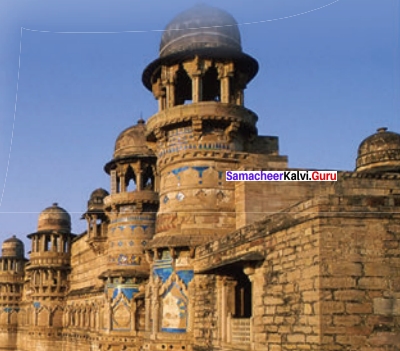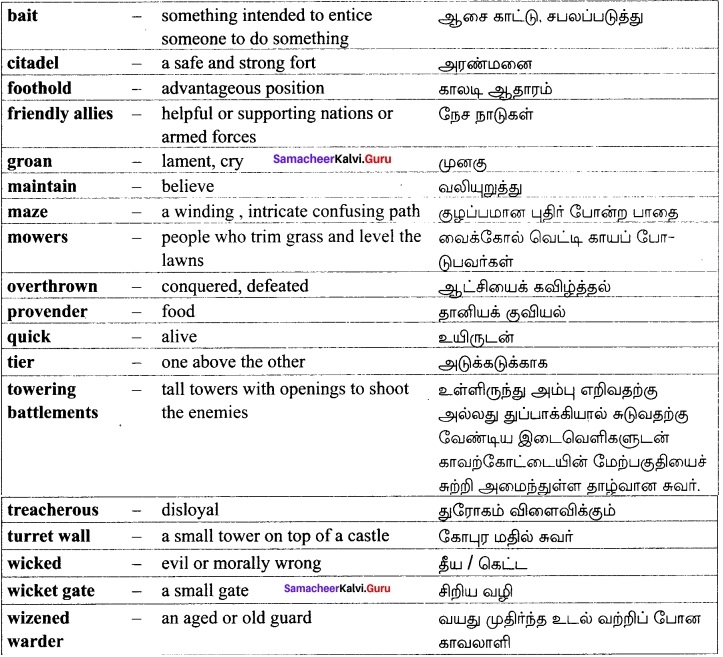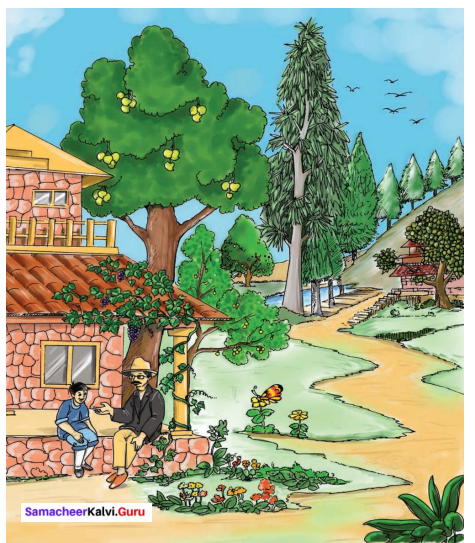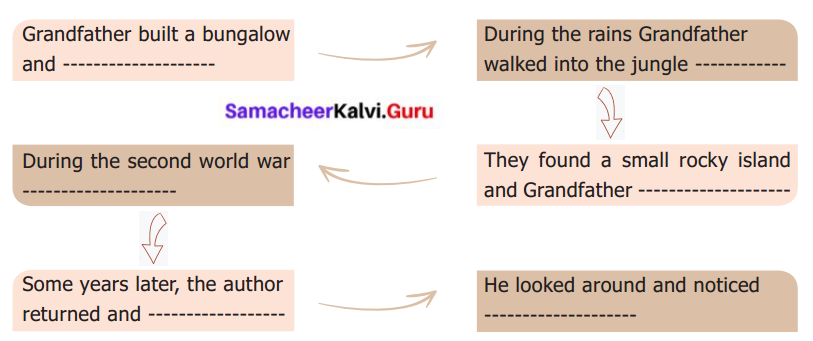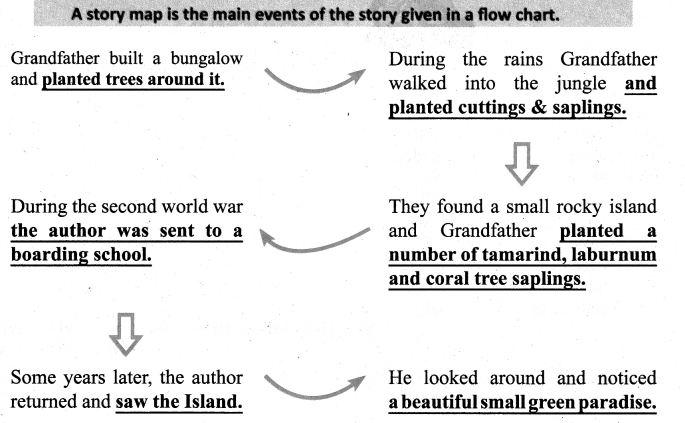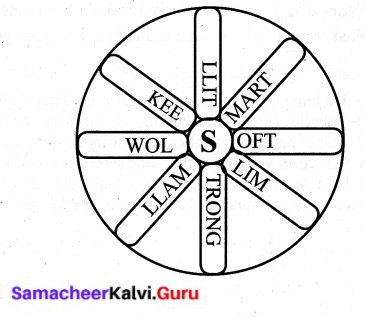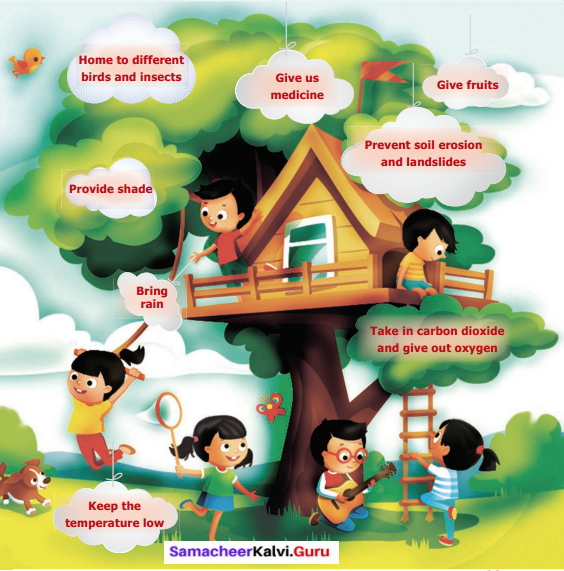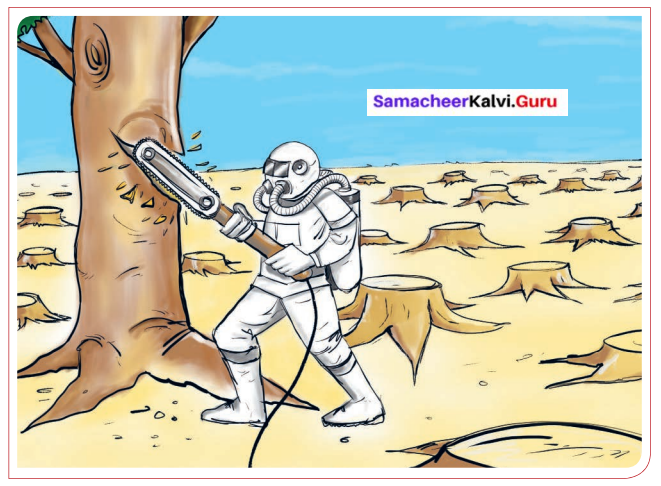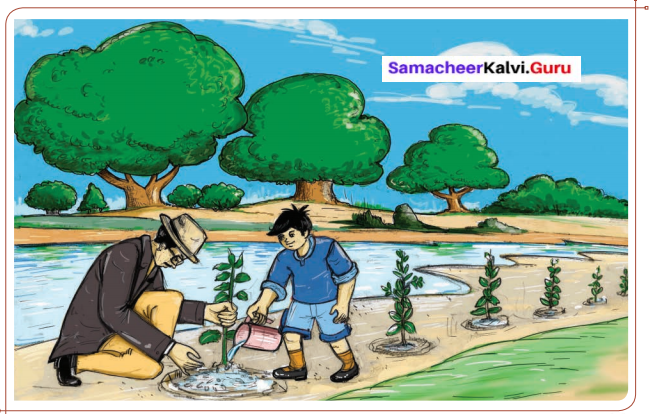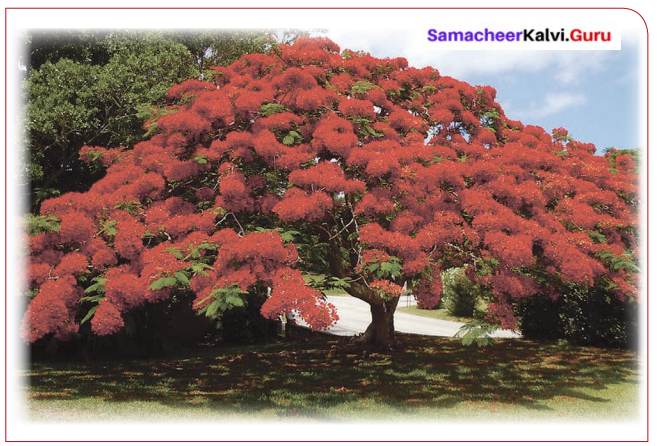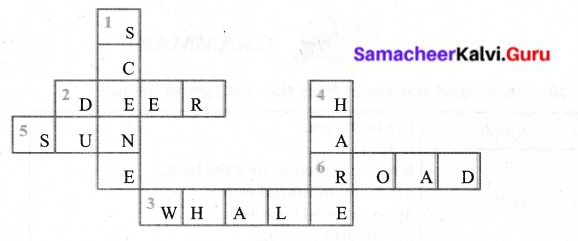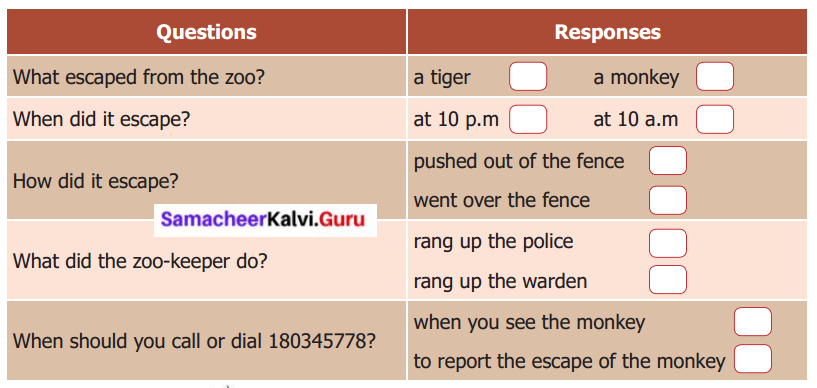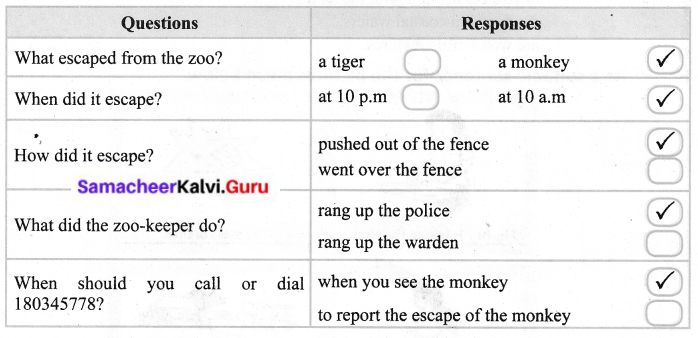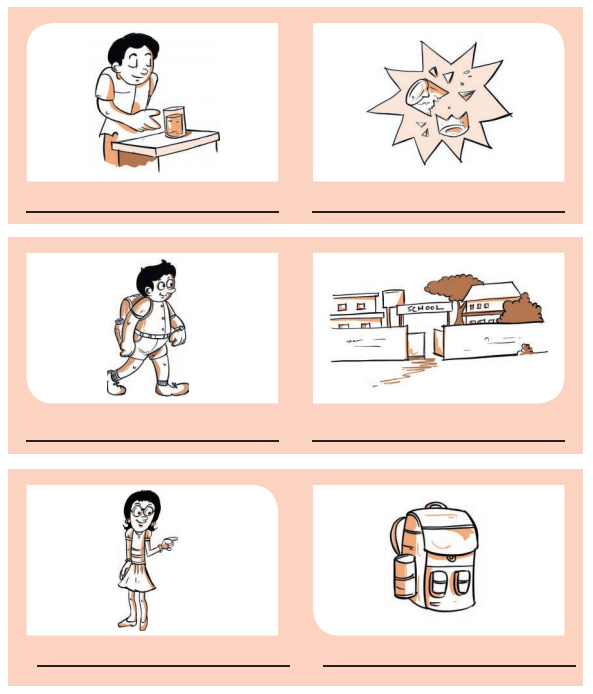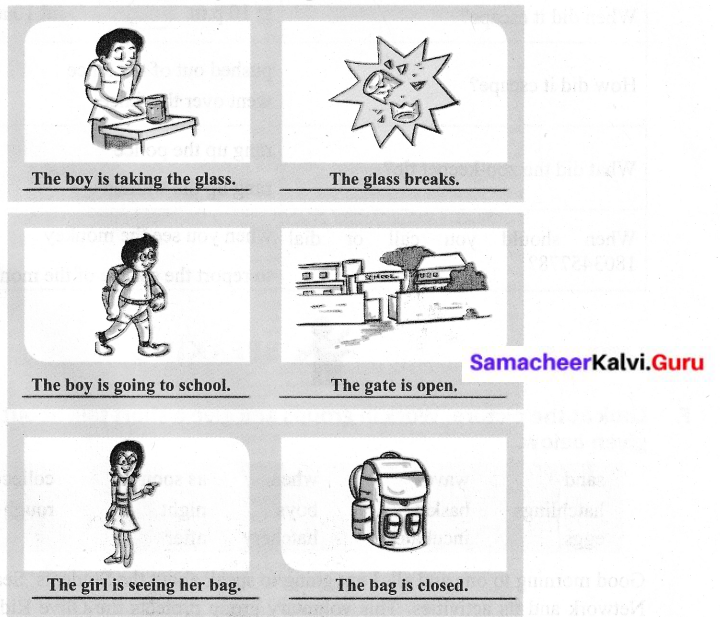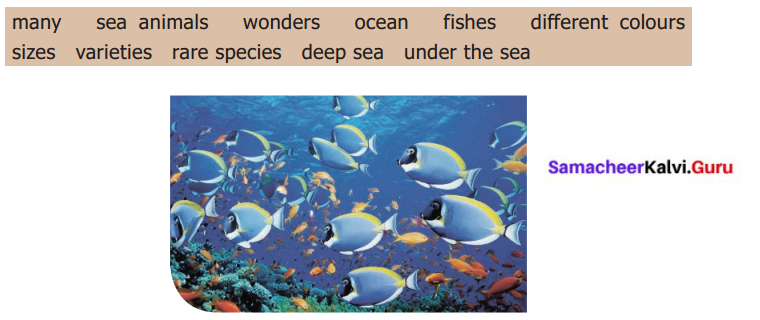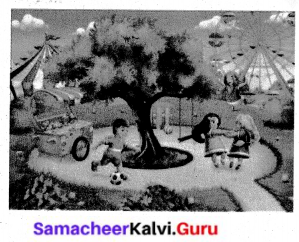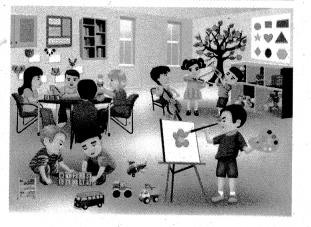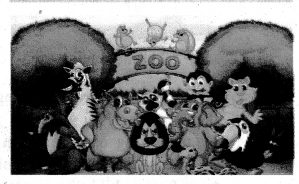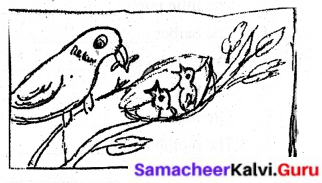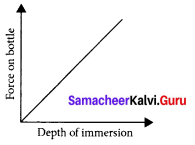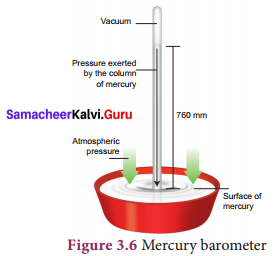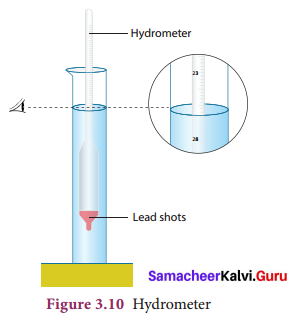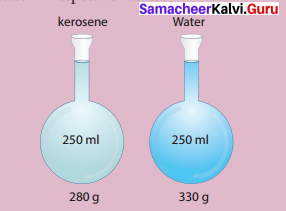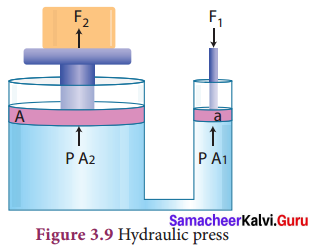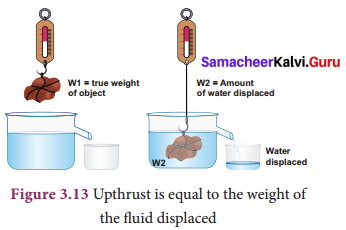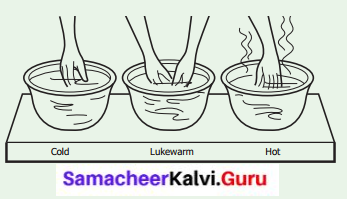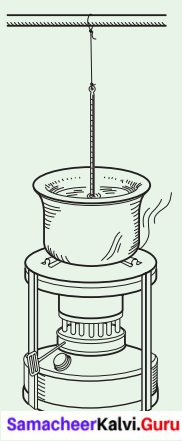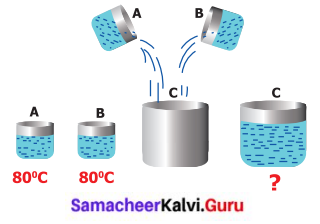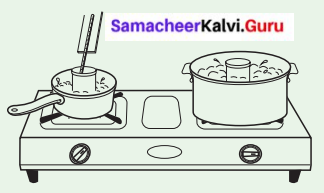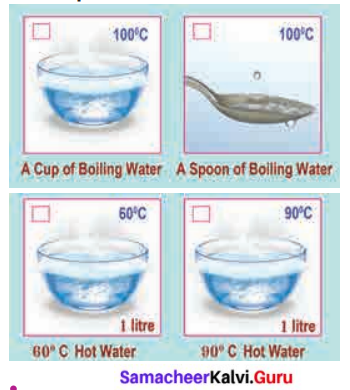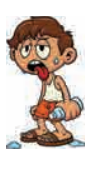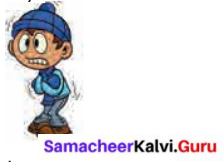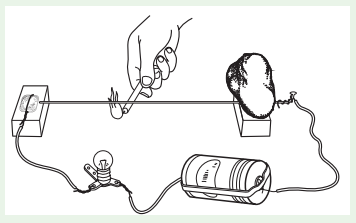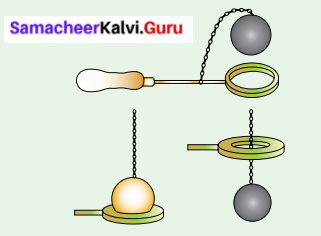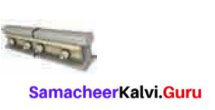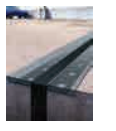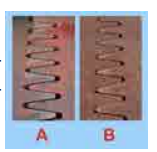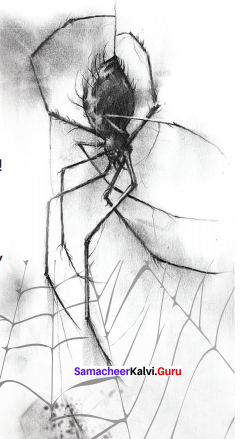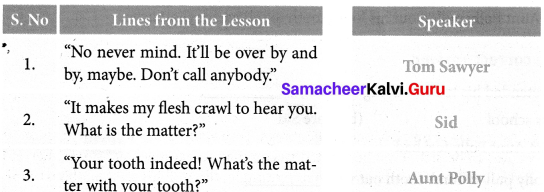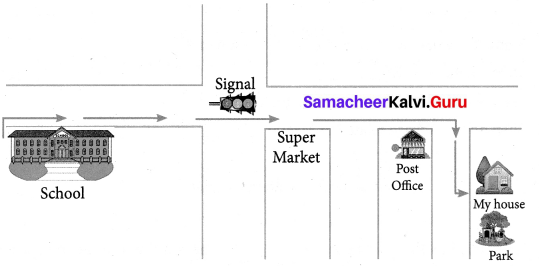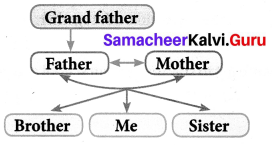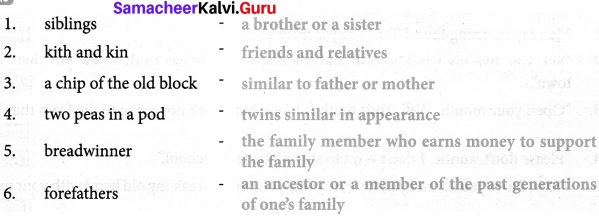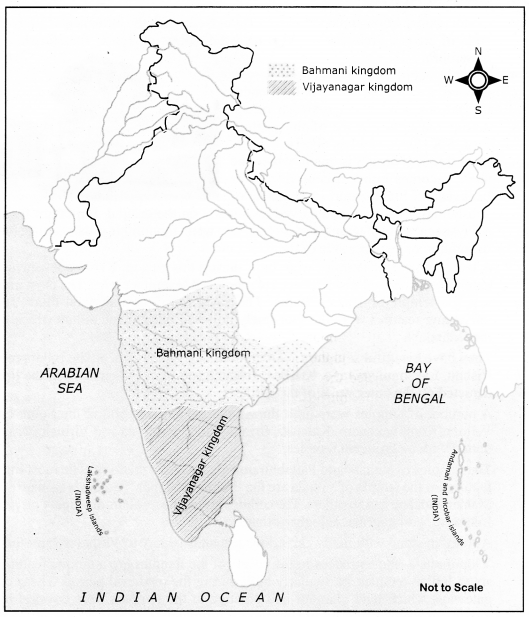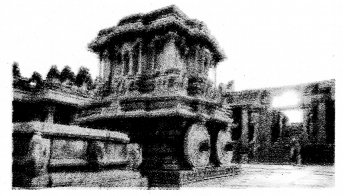Students can Download English Lesson 2 Friendship Questions and Answers, Summary, Activity, Notes, Samacheer Kalvi 8th English Book Solutions Guide Pdf helps you to revise the complete Tamilnadu State Board New Syllabus and score more marks in your examinations.
Tamilnadu Samacheer Kalvi 8th English Solutions Term 1 Prose Chapter 2 Friendship
Read And Understand
A. Choose the correct answer.
Friendship 8th Std Prose Question 1.
Vetri went to Asif ‘s _______
(a) home
(b) office
(c) room
Answer:
(b) office
Friendship Prose In 8th Standard Summary Question 2.
Vetri came to Chennai to visit his _______
(a) father
(b) friend
(c) brother
Answer:
(b) friend
Friendship Lesson For 8th Standard Question 3.
Asif saw his friend through the _______
(a) camera
(b) window
(c) glass
Answer:
(a) camera
B. Choose correct synonyms for the italic word.
Friendship Lesson 8th Standard Question 1.
Vetri constructed a bungalow.
(a) design
(b) build
(c) foundation
(d) destroy
Answer:
(b) build
Friendship 8th Std Prose Summary Question 2.
The brothers started a business, separately.
(a) apart
(b) alone
(c) united
(d) combined
Answer:
(a) apart
Friendship Prose In 8th Standard Question 3.
I am living in the outskirts of the village.
(a) border
(b) outpost
(c) center
(d) region
Answer:
(b) outpost
8th Standard English Friendship Lesson Question 4.
Asif quarreled with his friend.
(a) fight
(b) differ
(c) peace
(d) fun
Answer:
(a) fight
Friendship Prose Summary Question 5.
He stood astounded.
(a) happy
(b) surprised
(c) shocked
(d) excited
Answer:
(c) shocked
C. Choose correct Antonyms for the italic word.
Friendship Lesson Question Answer Question 1.
The wife replied angrily.
(a) calm
(b) annoyed
(c) irritate
Answer:
(a) calm
8th English Prose Friendship Question 2.
The vegetables look fresh.
(a) rotten
(b) dull
(c) new
Answer:
(a) rotten
8th Friendship Question 3.
Vetri had a strong will to start a new business.
(a) desire
(b) thin
(c) weak
Answer:
(c) weak
Friendship Prose Question 4.
Vetri was surprised by his friend.
(a) unsurprised
(b) expected
(c) shocked
Answer:
unsurprised
Question 5.
He spoke nervously
(a) Scared
(b) confident
(c) anxious
(b) confident
Answer:
(b) confident
D. Answer the following questions in one or two words.
Question 1.
What was the name of Vetri’s company?
Answer:
The name of Vetri’s company was ‘Vetri Constructions’.
Question 2.
Why did he sell his properties?
Answer:
He sold his properties to pay his loans.
Question 3.
Which was the home town of Vetri and Asif ?
Answer:
The home town of Vetri and Asif was Keelakudi village.
Question 4.
When was the school established?
Answer:
The school was in the outskirts of Keelakudi village. It was a middle school.
Question 5.
When did Vetri receive a call from Asif’s office?
Answer:
Two days later after reaching his home, Vetri received a call from Asif’s office.
E. Answer the following questions in 100 words.
Question 1.
How Vetri lost his properties?
Answer:
Vetri was once a successful businessman in Coimbatore. His Vetri constructions was a leading construction company. After his father’s death, his brothers demanded to split the wealth, as they wanted to start their business separately. From then on, Vetri found it difficult to establish his business. He took loans to run his company, but he could not pay the loan. So he sold all his properties and paid the loans. His family then moved to a very small house. He found a job and started to lead a normal life.
Question 2.
What happened when Vetri met Asif?
Answer:
Vetri boarded the train and went straight to Asif’s office. When Vetri was enquiring about Asif, he got a pat on his back. It was Asif, who came to receive Vetri, after seeing him through the CCTV camera. Vetri was speechless. He apologized to Asif saying that he never got a chance to visit Chennai. So he couldn’t meet him at all. They spoke about their school days and the fun they had. They also discussed about their business. Asif took Vetri to his home for lunch. Vetri was surprised to see that everyone knows him. In the evening, Asif dropped him at the station.
Question 3.
How did Asif show his friendship?
Answer:
Asif was a true friend of Vetri. When Vetri came to his office, he came to receive him, as he saw through the CCTV camera. He gave Vetri a pat on his back. Vetri was speechless on seeing him. He took to his cabin. They spoke about their school days and the fun they had. They discussed about their business. Asif took Vetri to his home for lunch. Vetri was surprised to see that everyone knows him. Vetri stayed there till evening. Asif dropped him in the railway station. After two days, he invited Vetri to his office and assigned him a project.
Vocabulary
Compound Words
A. Match the following compound words and write them:
Answer:
First word | Second word | New word |
| match | mark | matchbox |
| air | cut | airport |
| blood | port | blood bank |
| Pop | gum | pop corn |
| sky | bank | sky blue |
| hair | blue | hair cut |
| book | corn | book mark |
| chewing | box. | chewing gum |
B. Choose the best answer to make a compound word.
Question 1.
Which can be placed after ‘soft’?
(a) play
(b) ware
(c) run
(d) cycle
Answer:
(b) software
Question 2.
Which can be placed before ‘light’?
(a) try
(b) sun
(c) horse
(d) cat
Answer:
(b) sunlight
Question 3.
Which can be placed after ‘safe’?
(a) chair
(b) guard
(c) shop
(d) van
Answer:
(b) safeguard
Question 4.
Which can be placed after ‘blue’?
(a) cane
(b) print
(c) see
(d) land
Answer:
(b) blueprint
Question 5.
Which can be placed after ‘water’?
(a) food
(b) stick
(c) fall
(d) out
Answer:
(c) waterfall
Singular, Plural
Write the plural form of the given words :
Answer:
No. | Singular | Plural |
| 1. | food | food |
| 2. | radius | radii |
| 3. | governor – general | governors-general |
| 4. | syllabus | syllabi |
| 5. | datum | data |
| 6. | commander-in-chief | commanders-in- chief |
| 7. | thesis | theses |
| 8. | forum | fora |
| 9. | cattle | cattle |
| 10. | genius | geniuses / genii |
Listening
Listen carefully to the passage given in QR code and answer the following questions.
Questions:
Question 1.
Whose speech is it?
Answer:
It is Rahim’s speech.
Question 2.
What did Rahul engrave?
Answer:
Rahul engraved Rahim’s help in his heart.
Question 3.
Who is lucky?
Answer:
Rahim is lucky.
Question 4.
Who bagged ‘all-rounder’ award?
Answer:
Rahul bagged all-rounder medal in school.
Question 5.
Whose birthday party is it?
Answer:
It was Rahul’s birthday party.
Writing
Arrange the picture in order by writing the numbers 1,2,3 and 4 in the given boxes and write this familiar story in about 100 words.
Make use of the words given below.
(thirsty, village, pitcher, disappointment, pebbles, water level )
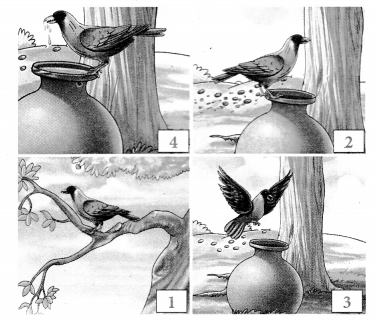
Answer:
One hot day, a thirsty crow in a village, searched for water everywhere. At last, it found . a pitcher. But there was a disappointment for the crow, as the water level in the pitcher was very low. The crow got an idea. It saw some pebbles nearby. It started putting pebbles in the pitcher. Slowly, the water level raised. The crow drank the water and flew away happily.
Grammar
Degrees Of Comparison
a. Fill in the blanks:
Answer:
| Positive | Comparative | Superlative |
| tall | taller | tallest |
| smart | smarter | smartest |
| large | larger | largest |
| more | more | most |
| late | Later/latter | latest (last) |
Let’s compare two things.
Question 1.
Which is faster a train or a plane?
Answer:
plane is faster than a train.
Question 2.
Which is cheaper gold or silver?
Answer:
Silver is cheaper than gold.
Question 3.
Which is larger, city or village?
Answer:
A city is larger than a village.
Question 4.
Which is bigger, a sea or an ocean?
Answer:
An ocean is bigger than a sea.
Question 5.
Which is taller, a giraffe or a camel?
Answer:
A giraffe is taller than a camel.
Let’s compare three things.
EG: Donkey, horse and elephant (strong)
A donkey is strong.
The horse is stronger than a donkey.
An elephant is the strongest.
Question 1.
Town – city – village (quiet)
Answer:
A city is quiet.
Town is quieter than the city.
The village is the quietest.
Question 2.
Istanbul – Moscow – London (populated)
Answer:
Istanbul is populated.
Moscow is more populated than Istanbul.
London is the most populated.
Question 3.
Windy weather – warm weather – rainy weather (good)
Answer:
Windy weather is good.
Warm weather is better than windy weather.
Rainy weather is the best.
Question 4.
Ocean – river – lake (deep)
Answer:
River is deep.
Lake is deeper than the river.
Ocean is the deepest.
Question 5.
The USA – Russia – Spain (large)
Answer:
Hitl Spain is a large country.
The USA is larger than Spain.
Russia is the largest country.
Question 6.
The Mahanadi – The Cauvery – The Ganga (long)
Answer:
The cauvery is a long river.
The Mahanadi is longer than the Cauvery.
The Ganga is the longest river in our country.
Question 7.
Chennai – Hyderabad – Bangaluru (modern)
Answer:
Chennai is a modern city.
Hyderabad is more modern than Chennai.
Bengaluru is the most modern city.
Friendship Additional Questions
I. Choose the correct Synonyms for the italic word
Question 1.
After his fathers death, his brothers demanded to split the wealth.
(a) break up
(b) brush
(c) open
(d) close
Answer:
(a) break up
Question 2.
But he always long to start a new construction company.
(a) fabrication
(b) devastation
(c) real estate
(d) building formation
Answer:
(d) building formation
Question 3.
He told his wife about his decision.
(a) hesitation
(b) delay
(c) judgement
(a) Abnormal
Answer:
(c) judgement
Question 4.
They lived in the beautiful village Keelakudi.
(a) ugly
(b) awful
(c) vile
(d) Pretty
Answer:
(d) Pretty
Question 5.
Their friendship grew stronger with time.
(a) weaker
(b) slender
(c) firmer
(d) Punier
Answer:
(c) firmer
Question 6.
Asif consoled him with a chocolate.
(a) comforted
(b) distressed
(c) troubled
(d) annoyed
Answer:
(a) comforted
Question 7.
I don’t know if you will get an appointment.
(a) employment
(b) dismissal
(c) arrangement for meeting
(d) discharge
Answer:
(c) arrangement for meeting
Question 8.
Vetri was dumbfounded.
(a) speechless
(b) mindful
(c) conscious
(d) Casual
Answer:
(a) speechless
Question 9.
Our MD Mr. Asif, has assigned a project to you.
(a) refused
(b) cancelled
(c) given
(d) relieved
Answer:
(c) given
Question 10.
The security was astounded.
(a) annoyed
(b) irked
(c) upset
(d) surprised
Answer:
(d) surprised
II. Choose the correct Antonyms for the italic word.
Question 1.
Vetri was once a successful businessman in Coimbatore.
(a) powerful
(b) unsuccessful
(c) wonderful
(d) awful
Answer:
(b) unsuccessful
Question 2.
Vetri found it difficult to establish his business.
(a) abolish
(b) setup
(c) deal
(d) offer
Answer:
(a) abolish
Question 3.
He started to lead a normal life.
(a) usual
(b) same
(c) ordinary
(d) abnormal
Answer:
(d) abnormal
Question 4.
His brothers demanded to split the wealth.
(a) offered
(b) searched
(c) rushed
(d) ordered
Answer:
(a) offered
Question 5.
One day he discussed with his wife.
(a) ignored
(b) considered
(c) examined
(d) argued
Answer:
(a) ignored
Question 6.
To everyone’s surprise, they continued to be good friends.
(a) lingered
(b) extended
(c) discontinued
(d) lasted
Answer:
(a) lingered
Question 7.
One day there was a quarrel between Vetri and Asif’s families.
(a) row
(b) fight
(c) contest
(d) agreement
Answer:
(d) agreement
Question 8.
The results and marks never affected their friendship.
(a) moved
(b) stirred
(c) unaffected
(d) pretended
Answer:
(c) unaffected
Question 9.
Two days later, Vetri received a call.
(a) paid
(b) gave
(c) lived
(d) took
Answer:
(b) gave
Question 10.
Vetri told his wife everything in detail.
(a) same
(b) anything
(c) nothing
(d) all
Answer:
(c) nothing
III. Choose the Correct Answer [MCQ]
Question 1.
Vetri’s constructions was once a ________ construction company.
(a) small
(b) leading
(c) dull
(d) vague
Answer:
(b) leading
Question 2.
Everything went well, until his ________ died
(a) father
(b) sister
(c) uncle
(d) brother
Answer:
(a) father
Question 3.
They were alwavs together in learning and ________
(a) writing
(b) reading
(c) studying
(d) playing
Answer:
(d) playing
Question 4.
They also helped others with their ________
(a) homework
(b) lessons
(c) projects
(d) assignment
Answer:
(b) lessons
Question 5.
The security was ________
(a) surprised
(b) astounded
(c) arrogant
(d) bold
Answer:
(b) astounded
Question 6.
They spoke about their school days and the ________ they had.
(a) boring
(b) lethargic
(c) fun
(d) indolent
Answer:
(c) fun
Question 7.
Then thev discussed about their ________
(a) business
(b) children
(c) relatives
(d) plans
Answer:
(a) business
Question 8.
Asif dropped him in the ________ station.
(a) police
(b) railway
(c) bus
(d) fire
Answer:
(b) railway
IV. Short Questions with Answers.
Question 1.
What did Vetri’s Constructions construct? ‘
Answer:
Vetri’s constructions constructed many shopping complexes, houses and a few apartments in and around Coimbatore.
Question 2.
What happened after his father’s death?
Answer:
After his father’s death, his brothers demanded to split the wealth, as they wanted to start their business separately.
Question 3.
Whom did Vetri decide to meet? Why?
Answer:
Vetri decided to meet his friend Asif in Chennai for help.
Question 4.
How strong was their friendship?
Answer:
Vetri and Asif studied in the same school at Keelakudi village. They were always together in learning and playing. They continued to be good friends till their X Std. After that, Asif had to move to Chennai.
Question 5.
Who stopped Vetri at the gate of Asif’s office?
Answer:
The security stopped Vetri at the gate and asked whom does he wants to meet.
Question 6.
How did Asif know that Vetri had come to his office?
Answer:
Asif saw him through the CCTV camera and came to receive him.
V. Paragraph Questions with Answers.
Question 1.
How did Vetri and Asif’s friendship start?
Answer:
Their friendship started on the first day of school. When Vetri’s parents dropped him at the school, he started crying. Asif consoled him with a chocolate and asked him not to cry. From that day, they stayed together, played together and even exchanged their food. Their friendship grew stronger with time. They were always good in studies and helped each other in lessons. There was always a healthy competition between them. Surprisingly, the exams, results and marks never affected their friendship. Their friendship continued till tenth standard. Then Asif moved to Chennai
Friendship Grammer Additional
Degrees of Comparison
I. Fill in the blanks.
Question 1.
| Positive | Comparative | Superlative |
| big | ||
| costlier | ||
| hardest | ||
| short | ||
| simpler | ||
| tallest | ||
| long | ||
| faster |
Answer:
| Positive | Comparative | Superlative |
| big | bigger | biggest |
| costly | costlier | costliest |
| hard | harder | hardest |
| short | shorter | shortest |
| simple | simpler | simplest |
| tall | taller | tallest |
| long | longer | longest |
| fast | faster | fastest |
Question 2.
| Positive | Comparative | Superlative |
| beautiful | ||
| more different | ||
| most enjoyable | ||
| effectively | ||
| more delicious | ||
| most useful | ||
| honest | most honest | |
| more qualified |
Answer:
| Positive | Comparative | Superlative |
| beautiful | more beautiful | most beautiful |
| different | more different | most different |
| enjoyable | more enjoyable | most enjoyable |
| effectively | more effectively | most effectively |
| delicious | more delicious | most delicious |
| useful | more useful | most useful |
| honest | more honest | most honest |
| qualified | more qualified | most qualified |
Question 3.
Adjectives | Comparative | Superlative |
bad | ||
drier | ||
far (place) | farthest | |
| far (time) | furthest | |
better | ||
late (time) | latest | |
| late (order) | latter | |
| less | ||
most | ||
safe | ||
simple | simpler |
Answer:
| Adjectives | Comparative | Superlative |
| bad | worse | worst |
| dry | drier | driest |
| far (place) | farther | farthest |
| far (time) | further | furthest |
| good | better | best |
| late (time) | later | latest |
| late (order) | latter | last |
| little | less | least |
| many | more | most |
| safe | safer | safest |
| simple | simpler | simplest |
II. Change the following sentences into comparative degree sentences.
Question 1.
India is not as large as China.
Answer:
China is larger than India.
Question 2.
Water is not as light as air.
Answer:
Air is lighter than water.
Question 3.
My brother is not as tall as I am.
Answer:
I am taller than my brother.
Question 4.
Ravi is not as intelligent as Magesh.
Answer:
Magesh is more intelligent than Ravi.
Question 5.
No other problem facing our country is as serious as unemployment.
Answer:
Unemployment is more serious than any other problem facing our country.
III. Change the following sentences into Superlative degree sentences.
Question 1.
Chandrasekar is richer than any other man in this town.
Answer:
Chandrasekar is the richest man in this town.
Question 2.
Vijay is taller than any other student in this class.
Answer:
Vijay is the tallest student in this class.
Question 3.
Shakespeare is greater than any other English poet.
Answer:
Shakespeare is the greatest of English Poets.
Question 4.
Greenland is larger than any other island.
Answer:
Greenland is the largest island.
Question 5.
Anita is prettier than any other girl in my class.
Answer:
Anita is the prettiest girl in my class.
Friendship Summary
Section – I
This is a story on the Friendship between Vetri and Asif. Vetri was a successful businessman in Coimbatore. His Vetri construction company constructed many shopping complexes, houses and a few apartments in and around Coimbatore. After his father’s death, he was forced to split the wealth to his brothers. From then on, Vetri found it difficult to establish his business. He could not pay the loans taken to run his company. So he sold all his properties and paid the loans. He moved to a very small house with his family.
He found a job and led a normal life. But he desired to start a company again. No one was ready to lend him money. One day, his wife suggested him to ask his friend Asif for help. But Vetri hesitated to ask him for help, as he had not seen him for a long time. After deep thought, he decided to meet his friend Asif who was in Chennai.
Fill in the blanks :
- _________ constructions was once a leading company
- He took a_________to run his company.
- Vetri’s friend is_________
Answers:
- Vetri
- loan
- Asif
Section – II
Vetri boarded the train to Chennai. His memory went back to his school days. They lived in the beautiful village Keelakudi near Coimbatore. Vetri and Asif studied in a school in the outskirts of the village Keelakudi. The teachers and the students would never forget Vetri and Asif and their friendship. They were always together in learning and playing.
Their friendship started on the first day of school. On the first day, when Vetri started crying, Asif consoled him with a chocolate and told him not to cry. After that day, they stayed together played together and even exchanged their food. They were always good in studies and helped each other in lessons.
One day, there was a quarrel between Vetri and Asif’s families. But this did not affect their friendship. Their exams, results and the marks never affected their friendship. After their tenth standard, Asif moved to Chennai and Vetri settled in Coimbatore.
Say True or False.
- Keelakudi was the native of Vetri.
- The school was a middle school.
- Vetri and Asif were good in studies.
- Vetri never visited Chennai.
- Asif was a businessman.
Answer:
- True
- True
- True
- True
- True
Section – III
When Vetri went to Asif’s office, he was stopped by the security. Vetri told him that he wanted to meet his friend Asif. He directed Vetri to the Receptionist. When Vetri was asking the receptionist whether he could meet Asif his friend, Vetri got a pat on his back. It was Asif his friend. Asif saw him through the CCTV camera and came down to receive him. Vetri was speechless and apologized to Asif that he did not get a chance to visit Chennai till then. He said that since he had come to attend his friend’s wedding he thought that he could meet him.
They spoke about their school days, the fun they had. They discussed about their business. Asif took Vetri to his home to lunch. Vetri was surprised to see that everyone knows him. In the evening, Asif dropped him in the railway station. Vetri reached home and told his wife everything in detail. Two days later, he received a call from Asif’s office stating that Asif, their M.D. had assigned a project to Vetri.
